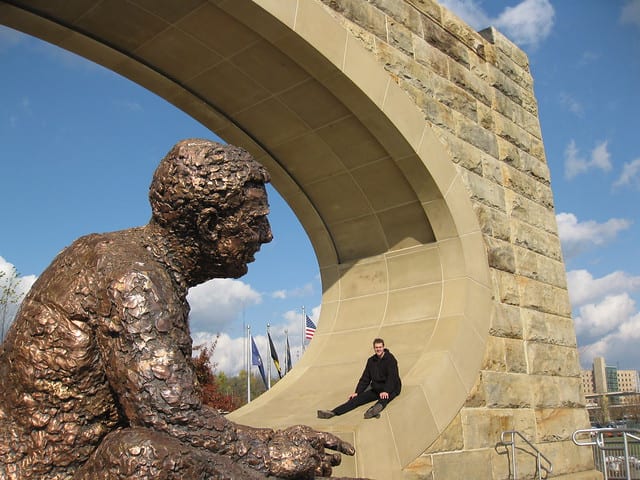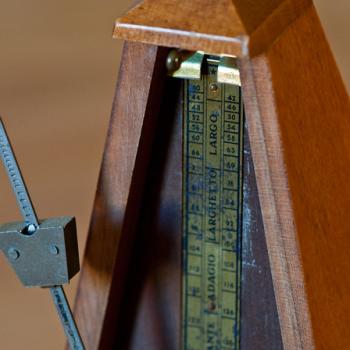
Cinema Divina
One of the first contemplative practices I learned from monastic life is lectio divina, or sacred reading.
Lectio divina is an approach to reading with different priorities than the ways we usually read. When we read a news story or a textbook, or even a blog post, we usually read seeking information. We often read sacred texts seeking to be formed more than to be informed.
Many monks believe we read sacred texts to find meaning beneath the surface of the words. Sacred reading is more than merely skimming a text looking for its outline.
Traditionally, monks follow a structure for lectio divina which has four steps or movements. First we read, then we meditate, we pray, and then we contemplate.
We can apply the principles and practice of lectio divina to other activities. I have relied on them as I take walks with people, paying attention to what we experience. Another way we can apply them is to the films we see.
The movies we see are the results of work by large groups of people. Each one of them expresses its own messages and perspectives. Reflecting on the films I see shapes my own perspective.
When we apply an approach of lectio divina to watching a movie I refer to it as cinema divina.
Cinema Divina: A Beautiful Day in the Neighborhood
I recently saw A Beautiful Day in the Neighborhood and left knowing I wanted to see it again.
My expectations going in were shaped by information I already had. I had watched a documentary about Mister Rogers and thought I knew what to expect from this film.
One of the first lessons I learned was Mister Rogers is not the central character of this movie. The film tells the story of the relationship which develops between Mister Rogers and a magazine writer who is assigned to profile him.
The magazine is producing an issue on heroes and the writer is skeptical about heroism. He is typically relentless in his pursuit of the truth about people the rest of us see as heroic.
The movie shows us the story of what happens between them.
My cinema divina drew me to listen to the conversations between the two characters. The writer would ask interview questions as he worked to unearth the truth about Mister Rogers. Mister Rogers would ask the writer questions about himself and his life.
I did not study the technique of the actors or other artists who contributed to the film. My attention was not on learning about the actual conversations which occurred between these people.
Cinema divina allowed me to be formed by what the film said to me that day.
We have grown accustomed to a world in which movies or music play in the background. Some of us experience the same scenes from the same films again and again. They become easy to ignore. It can be a challenge for films to shape us when we are not paying attention.
Cinema divina helped me be surprised by A Beautiful Day in the Neighborhood. It was more than I expected.
Cinema Divina and How We Pay Attention
It can be easy for us to feel overwhelmed by the information pouring into our lives. Some of us use the flood of information as a distraction, a way to avoid paying attention.
Contemplative monastic practices including lectio divina and cinema divina can help us be attentive in positive ways.
It is easy for us to get caught up in the details of our lives. There are so many things we need to remember and keep organized. Some of us work hard to keep everything straight and ensure nothing falls through the cracks.
Practicing an approach like cinema divina can help us not lose track of the big picture. Things which are important in the longer run can be pushed from our minds by things which appear urgent. Reflection is a way to give ourselves an opportunity to reset our systems.
Our lives are not intended to be tyrannized by the urgent at the expense of what is important. The ways we find meaning are rarely what demands our immediate attention.
We practice spending time reflecting on what gives us meaning and purpose. Applying cinema divina to how we experience life allows us to see it in new ways.
Practicing Cinema Divina in Everyday Life
We do not need to see a film to put the principles of cinema divina into practice.
Meaningful people and experiences fill our everyday lives. A cinema divina approach allows us to take time to become open to the meaning.
In A Beautiful Day in the Neighborhood the character of Mister Rogers slows the conversations down. He asks questions which help the writer appreciate the meaning reflected in his questions.
Our everyday practice of cinema divina begins with us understanding our experiences as sacred texts. Each day, each conversation has meaning for us to discern, appreciate, and put into practice.
We pay attention and recognize the spiritual significance of what happens to us in our everyday lives. Our cinema divina approach helps us realize spiritual life is not something which happens to other people. It is about us as much as it is about people who lived a long time ago.
Cinema divina helps us open our eyes to the meaning of what is happening in our everyday lives. We learn how to pay attention.
When can we practice cinema divina today?
How will we practice cinema divina in everyday life this week?
[Image by daveynin]
Greg Richardson is a spiritual life mentor and coach in Southern California. He has served as an assistant district attorney, an associate university professor, and is a lay Oblate with New Camaldoli Hermitage near Big Sur, California. Greg’s website is StrategicMonk.com and his email address is [email protected].












